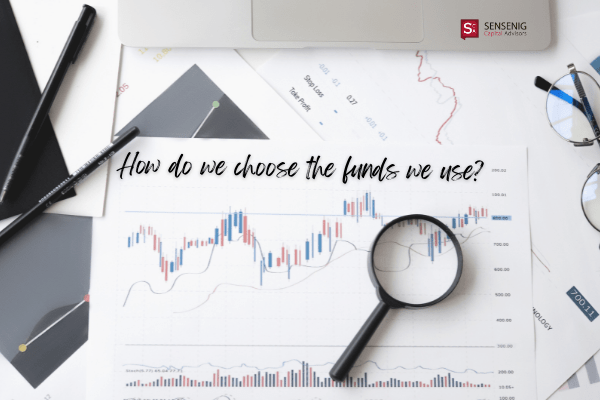The investment community lost one of its more colorful characters last week with the passing of Martin F. Zweig, a prominent market pundit, author, and chairman of Zweig-DiMenna Associates LLC, a New York investment firm. His death also marks the close of another chapter in the long-running debate on the virtues of market timing.
Zweig took a keen interest in stocks as a teenager, and after earning a PhD in finance from Michigan State University, he began writing investment newsletters while teaching in New York. He launched The Zweig Forecast in 1971 with a handful of subscribers and continued to publish it, with considerable success, for the next 26 years. Zweig loved numbers (including baseball trivia) and was closely associated with statistical measures of monetary policy and market momentum that he combined into what he called a “super model” to assess market conditions. He is credited with introducing the put/call ratio, a measure of investor sentiment, to the toolkit of market forecasters. He transitioned to money management, and in October 1986, he launched the Zweig Fund, a closed-end mutual fund that relied on his analysis of market trends to adjust its exposure to stocks and bonds.
Zweig was a frequent contributor to both print and broadcast media and wrote numerous articles forBarron’s, a weekly publication with a devoted following among those seeking comprehensive market statistics. Perhaps his finest hour was an appearance on the television show Wall Street Week with Louis Rukeyser on Friday evening, October 16, 1987. When his host asked him to comment on assertions from other market commentators that the “bull market is dead,” Zweig replied he was expecting a crash but was reluctant to say so publicly. It was too similar, he said, to shouting “fire” in a crowded theater. Zweig’s prediction proved eerily accurate: The Dow Jones Industrial Average fell by a staggering 29.2% in chaotic trading the following Monday, an even bigger setback than the combined losses from Black Monday and Black Tuesday in October 1929. The Zweig Fund emerged relatively unscathed: According to a profile several years later in SmartMoney, the fund had 58% of its assets in cash leading up to the crash, and experienced a loss of only 6.2% on October 19. Traumatized by the unprecedented market break, many investors sought out advisors or analysts who appeared to have avoided the debacle. Zweig’s reputation as a financial expert soared. For years, he was introduced as “the man who called the crash.” The headline of Zweig’s obituary in the Wall Street Journal described him as a “master market timer.”
Zweig was not the only analyst to predict the 1987 crash, but his appearance on Wall Street Week was so visible and so perfectly timed that his status as an astute financial guru was greatly enhanced. By the time SmartMoney published its profile in 1995, his firm was managing nearly $4 billion in assets. In 1999, Zweig purchased a multistory penthouse above the Pierre Hotel, the most expensive residential transaction in New York City up to that time.
Should investors seek to enhance their returns by applying Zweig’s statistical timing tools? The evidence is mixed at best. Zweig’s October 1987 market call was on the money, and the Hulbert Financial Digestonce reported that The Zweig Forecast ranked first among market newsletters for risk-adjusted performance. Many investors have discovered, however, that making one or two great predictions is often insufficient to generate above-average long run results—you have to be right over and over again to outperform Mr. Market.
Moreover, it appears that achieving excess returns with real dollars is more challenging than making prescient forecasts in a newspaper column. Annualized return for the Zweig Fund from inception in October 1986 through January 31, 2013, was 6.79% calculated from net asset value and 5.84% based on NYSE closing share prices. (The latter figure reflects the difference between the fund’s reported net asset value and the market price of the shares in NYSE trading.) Over this same time period, the annualized return was 9.84% for the S&P 500 Index and 7.90% for a static mix allocated 30% to the S&P 500 Index and 70% to the Barclays Aggregate Bond Index. A tilt toward small cap or value stocks within these indices over this period would have produced even higher returns.
Market timers often acknowledge that their signals do not provide sufficient guidance to outperform a buy-and-hold, 100% equity strategy. Their goal, they say, is to avoid major bear market losses by holding a large fixed-income allocation during market downturns and capturing a meaningful portion of equity market rewards by increasing stock holdings during the upswing. Reducing bear market losses may be a laudable goal, but as this example shows, it can also be pursued with greater simplicity by adopting a lower equity exposure at all times and ignoring the costs and frustrations associated with constant fiddling.
It’s safe to say that no one worked more diligently or enthusiastically than Martin Zweig to tease out tomorrow’s stock prices from today’s data. But the evidence suggests that even the most dedicated student of market statistics is unlikely to meet with long-run success.
About the Author:
Weston J. Wellington, a vice president with Dimensional, is another of the firm’s in-house research experts. He works closely with financial advisors in the US, Canada, Europe, Australia, and Latin America, showing them how a science-based “equilibrium” strategy is the most reliable way to achieve investment success and why their clients are unlikely to hear about this approach from the usual sources of financial advice.
References:
Stephen Miller, “Master Market Timer Had Front Row Seat,” Wall Street Journal, February 19, 2013.
William Yardley, “Martin Zweig, Who Forecast ’87 Market Crash, Dies at 70,” New York Times, February 22, 2013.
Zweig Fund performance data, www.virtus.com, accessed February 22, 2013.
John Anderson, “Running on Empty,” SmartMoney, September 1995.
Dow Jones data provided by Dow Jones Indexes.
S&P data provided by Standard and Poor’s Index Services Group.
Barclays data provided by Barclays Bank PLC.



